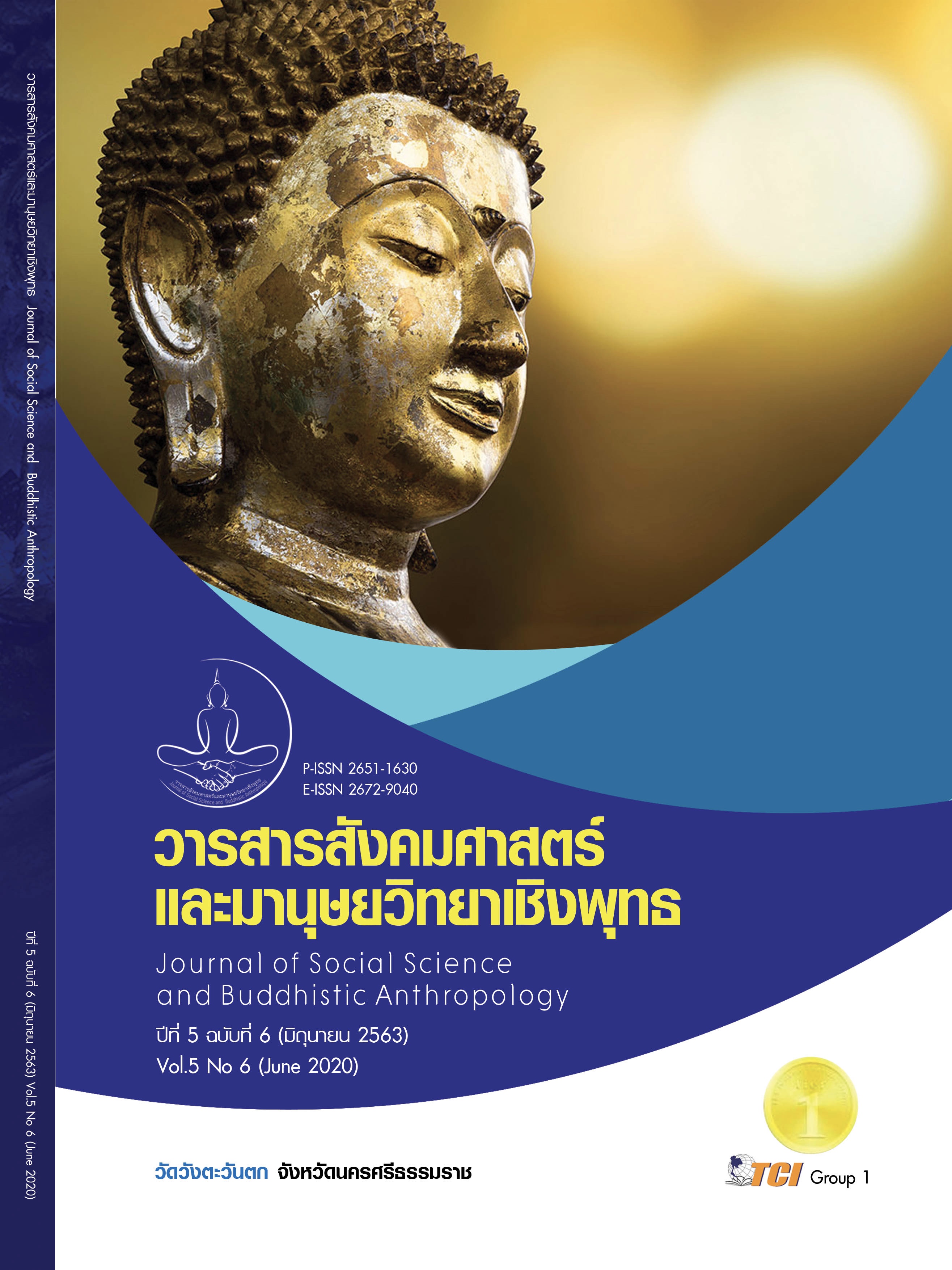THE INDICATORS DEVELOPMENT OF SOCIAL RESPONSIBILITY ONETHICAL RESPONSIBILITIES OF SECONDARY SCHOOL STUDENTSUNDER THE SECONDARY EDUCATIONAL SERVICE AREA OFFICE 13
Keywords:
Indicator Development, Social Responsibility Ethic, Secondary School StudentsAbstract
The purposes of this article were to develop the indicators and prove the structural straightness of the measurement model on social responsibility indicators of secondary school students Under the Secondary Educational Service Area Office 13 with empirical data. Using mixed methods, qualitative and quantitative. The procedures consisted of two steps as follows: step I: was setting the indicators development on ethical responsibilities by studying, analyzing, synthesizing the related literature, by in-depth interview with 11 experts, step II: proved the structural straightness of the measurement model on social responsibility indicators by using the questionnaires to collect data from 1,140 Mathayom 5 students. The data were analyzed by using the confirmatory factor analysis of lisrell 8.53. Followed by Chi Square (χ2), Goodness of Fit Index (GFI) and Adjusted Goodness of Fit Index (AGFI) for analysis. The results revealed as follows: The indicators of social responsibility on ethical responsibilities of secondary school students under the secondary educational service area office 13 consisted of 4 components; 1) the public benefit view comprised of 23 indicators 2) the roles and duties view comprised of 31 indicators 3) the values in being a good person view comprised of 32 indicators, and 4) the values in being a good social member view comprised of 28 indicators. The approval results of the structural straightness of the measurement model on social responsibility indicators were related to the empirical data a statistical significance at the .05 level.
References
กัญญรัตน์ หงส์วรนันท์. (2557). การแสดงความรับผิดชอบต่อสังคม: กลยุทธ์และโอกาสขององค์กรธุรกิจประเทศกำลังพัฒนาในสังคมพลวัต. วารสารนิเทศศาสตร์ธุรกิจบัณฑิตมหาวิทยาลัยธุรกิจบัณฑิต, 6 (2), 83-112.
ถิรพงศ์ ฤกษ์ขา. (2558). การพัฒนารูปแบบการพัฒนาวินัยนักเรียนของสถานศึกษา สังกัดสำนักงานเขตพื้นที่การศึกษามัธยมศึกษาในกรุงเทพมหานคร. ใน ดุษฎีนิพนธ์ปรัชญาดุษฎีบัณฑิต สาขาการบริหาการศึกษาและภาวะผู้นำ. มหาวิทยาลัยเซนต์จอห์น.
ศุภวดี บุญญวงศ์. (2555). ปัจจัยเชิงเหตุของการเสริมสร้างคุณธรรม จริยธรรม ค่านิยมและบุคลิกลักษณะนิสัยที่ดีงามในการจัดกิจกรรมพัฒนาผู้เรียน. วารสารวิชาการคุณธรรมความดี, 1(1), 59-78.
ศูนย์บริหารกลาง. (2554). พระราชดำรัสของพระบาทสมเด็จพระเจ้าอยู่หัว วันพฤหัสบดีที่ 15 มกราคม 2558. เรียกใช้เมื่อ 27 มกราคม 2562 จาก http://www.cca.chula. ac.th/protocol/organizations-individuals.html
สรายุทธ กันหลง. (2554). การวิจัย: การวิเคราะห์องค์ประกอบเชิงยืนยัน (Confirmatory Factor Analysis: CFA). เรียกใช้เมื่อ 26 สิงหาคม 2562 จาก http://yuthxx. multiply.com/journal/item/357/357
สำนักข่าวอิศรา. (2559). รมว.ศธ. พร้อมนำแนวพระราชดำริฯ “เด็กรักครู - ครูรักเด็ก” หัวใจการปฏิรูปการศึกษา. เรียกใช้เมื่อ 18 กันยายน 2562 จาก http://www.isranews. org/isranews-news/item/52635
สำนักงานเลขาธิการสภาการศึกษา กระทรวงศึกษาธิการ. (2557). รายงานการวิจัยเรื่องแนวทางการพัฒนาการศึกษาไทยกับการเตรียมความพร้อมสู่ศตวรรษที่ 21. กรุงเทพมหานคร: พริกหวานกราฟฟิคจำกัด.
สำนักวิชาการและมาตรฐานการศึกษา สำนักงานคณะกรรมการการศึกษาขั้นพื้นฐาน กระทรวงศึกษาธิการ. (2554). แนวทางการพัฒนาการวัดและประเมินคุณลักษณะอันพึงประสงค์ ตามหลักสูตรแกนกลางการศึกษาขั้นพื้นฐาน พุทธศักราช 2551. กรุงเทพมหานคร: โรงพิมพ์สำนักงานพระพุทธศาสนาแห่งชาติ.
สุภมาส อังศุโชติ และคณะ. (2551). สถิติวิเคราะห์สำหรับการวิจัยทางสังคมศาสตร์และพฤติกรรมศาสตร์: เทคนิคการใช้โปรแกรม LISREL. กรุงเทพมหานคร: เจริญดีมั่งคงการพิมพ์.
Cronbach, L. J. (1990). Essentials of psychological testing (5 thed.). New York: Harper Collins Publishers.
Joseph, F. H. et al. (1998). Multivariate data analysis Upper Saddle River. New Jersey: Prentice Hall.
Nicolescu C. (2006). Corporate Social Responsibility in the Romanian higher Education. Retrieved March 28 , 2015, from http://www.policy.hu /cnicolescu
Porter, M. E. & Kramer, M. R. (2006). The Competitive Advantage of Corporate Philanthropy. Harvard Business Review, 80(12), 56-68.








